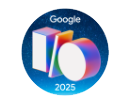How Big Corporations Dominate the Internet? In Search of the “Internet Is Dead” Theory
The internet was once a symbol of freedom and the unfettered flow of information. A place where users could freely share their thoughts, discover new content, and connect with others. However, in recent years, more and more people have come to feel that the internet is no longer the open and democratic platform it was intended to be. One of the most well-known criticisms of this is "Internet is Dead" theory that claims that the internet is now dominated mainly by algorithms, bots, and artificial content controlled by large corporations, and that human interactions have largely taken a backseat.
But is this claim really true? And if so, how does it affect those of us who use the internet every day?
What exactly is the “Internet is Dead” theory?
The theory is that there is less and less content on the internet created and consumed by real, human users. contentA significant part of the information circulating in the digital space is now automated bots, Artificial Intelligence and algorithms generate, and users become mere passive consumers, controlled by algorithms set by big companies.
This theory is particularly It became popular in 2021, when an anonymous post on the 4chan forum claimed that the internet is largely an artificially maintained space, where big tech companies control what people see, while more and more fake, automatically generated information floods the web. The theory is of course controversial, and many consider it an exaggeration, but a few important factors support that the internet today is significantly different from what was originally imagined.
Why did the theory become popular?
There are several factors behind the popularity of the “Internet is Dead” theory:
-
The algorithmic dominance of social media
- Large social platforms such as Facebook, Instagram, TikTok and Twitter/X, content is no longer displayed in chronological order, but algorithms select posts that you are more likely to like and share.
- This often leads to polarized content, fake news and the formation of information bubbles.
-
The rise of bots
- THE Cybersecurity experts say nearly 50% of internet traffic is generated by bots. (Source: Imperva 2023 Report)
- There are a lot of bot-generated posts on social media and in comment sections that spread political propaganda, marketing material, or even disinformation.
-
The spread of AI-generated content
- AI models such as ChatGPT, Midjourney or DALL·E, are able to independently produce content that is difficult to distinguish from texts written or images created by humans.
- According to a 2023 study, written content on the internet 40% is already generated by artificial intelligence maybe by 2025. (Source: Goldman Sachs AI Report, 2023)
-
THE Google and search engine manipulation
- Google results no longer necessarily show the most relevant information, but paid ads and SEO-optimized content are included to the foreground.
- Large companies dominate organic search results, while smaller, independent websites are pushed further back.
How does this theory influence our relationship with the internet?
Users increasingly feel that the Internet less free, and is more of a space driven by algorithms, where real human interactions take a backseat.
- Loss of trust in digital content: With deepfake videos, AI-generated news, and opinions written by bots, many people can no longer decide whether what they see is real.
- Suppression of creativity: Individual content producers are finding it increasingly difficult to prevail on major platforms as algorithms strive to maximize engagement and revenue.
- The phenomenon of digital “overload”: Due to the flood of information and constant advertising, many people feel that the internet is more oppressive than useful.
Where next?
Although the “Internet is Dead” theory paints a bleak picture of the future of the digital world, all is not lost. Decentralized technologies (such as blockchain) blockchain, Web3 and fediverse systems), as well as alternative, independent platforms, offer an opportunity for the internet to return to a freer, user-centered operation.
In the next chapter, we examine how this situation developed and the role that big technology companies play in it.
The initial purpose and evolution of the Internet
The Internet was originally created as a means of open, free information exchange and decentralized communication. The ARPANET project, launched in the late 1960s, aimed to allow researchers and scientists to share their results remotely, thus facilitating scientific collaboration. Following the success of ARPANET, additional networks joined in the 1980s, forming a global network that we know today as the Internet.
Developments in the 1990s and 2000s
The Internet began to grow explosively in the early 1990s. The introduction of the World Wide Web (WWW) and the Hypertext Transfer Protocol (HTTP) allowed users to browse websites through a graphical interface, which greatly increased the appeal of the Internet to the general public. This was the time when the first commercial Internet service providers appeared, providing access to households.
By the late 1990s and early 2000s, the Internet had become more than just a means of information gathering; it had also become a means of communication and entertainment. In addition to email, instant messaging, and forums, the first social networks emerged. In 1997, a platform called Six Degrees was launched, allowing users to create profiles, build relationships, and send messages to each other. Although Six Degrees closed down a few years later, it laid the foundation for later social media platforms.
The rise of social media and large platforms
The early 2000s saw the emergence of several new social media platforms. MySpace was launched in 2003 and quickly became popular, especially among young people. MySpace allowed users to create personalized profiles, share music, and connect with others. Facebook was launched in 2004, initially as a university network but soon grew into a global platform. Facebook quickly took the lead in social media with its innovative features and user-friendly interface.
These platforms have not only revolutionized communication between users, but have also introduced new business models. Through advertising revenue and data-driven services, social media giants have generated huge profits while exerting increasing influence over global information flows and social interactions.
The original, decentralized, and free spirit of the internet has gradually faded into the background as the dominance of large corporations has increased. Social media platforms and other tech giants have centralized a significant portion of the online space, controlling the content and information available to users. This process has fundamentally changed how the internet works and how users experience it online.
Basic theses of the theory
Centralizing digital content
The initial decentralized structure of the Internet has now undergone a significant transformation. In the digital space, a few large technology companies, such as Google, Facebook (Meta), Amazon, and TikTok, have become dominant players, centralizing a significant portion of online content. This centralization affects the flow of information and the user experience in many ways.
How do big tech companies dominate the internet?
These companies weave their various services and platforms into our daily lives, controlling what information we access and how we communicate with each other.
-
Google: 92% of the world's internet users use Google's search engine, in Hungary this proportion is 97%. In addition, the company plays a leading role in online video sharing (YouTube), email services (Gmail) and online map navigation (Google Maps)
.
-
Facebook (Meta): Facebook is one of the largest players in the social media market and also owns Instagram and WhatsApp, which also have a user base of billions. These platforms have a significant impact on the news and information users see every day.
-
Amazon: The e-commerce giant is not only known as an online shopping platform, but also a major player in cloud services (Amazon Web Services), which provide a wide range of website and online service they form the basis.
-
TikTok: The platform, which specializes in sharing short videos, has grown rapidly, especially among younger generations, and through its algorithms, it effectively influences the content that users see.
Algorithms and manipulation
These platforms use complex algorithms to filter and recommend content, aiming to increase user engagement and maximize advertising revenue. However, algorithms play a role not only in displaying relevant content, but can also contribute to the formation of information bubbles.
The impact of content filtering and recommendation systems
Algorithms offer users personalized content based on their past behavior, searches, and interactions. While this can enhance the user experience, it can also limit access to diverse perspectives.
-
Filter bubble: The “filter bubble” phenomenon created by algorithms results in users only encountering information that reinforces their own views, excluding opposing opinions. This phenomenon can contribute to social polarization and the spread of disinformation
.
-
Recommendation systems: According to a 2022 study, YouTube's recommendation system tends to prioritize content that contains sensationalist or misleading information, as these are more likely to generate clicks and views
.
Ratio of real to fake content
The authenticity of content on the internet is becoming increasingly challenging as artificial intelligence and automated systems enable the rapid and widespread dissemination of false information and disinformation.
The role of internet bots, artificial intelligence and generated content
-
Sticks: A significant portion of online traffic is generated by automated bots that can comment, share, and even carry on entire conversations, thereby deceiving real users.
-
Artificial intelligence: AI technologies, such as text and image generation systems, enable the creation of content that is difficult to distinguish from reality. This poses a challenge in the fight against disinformation, as false information becomes increasingly sophisticated and persuasive.
-
Clickbait and disinformation: In the race for attention, many platforms and content creators employ clickbait headlines and sensationalist content that is often misleading or outright false. This not only leads to user deception, but also undermines trust in authentic information.
The centralization of digital content and the flow of information driven by algorithms are having a profound impact on the information we access and how we interpret the world. The dominance of big tech companies and the rise of automated systems make it essential to be aware and critical of online content and strive to consume information from credible sources.
Changing the user experience
As the internet evolved, the user experience underwent a significant transformation. In its early days, the web was an open and free space where users actively contributed to the creation and sharing of content. However, with the rise of tech giants and the dominance of algorithms, personalization on the internet became increasingly manipulative, organic content was pushed to the background by paid promotions, and users became passive consumers.
Internet personalization vs. manipulation
Artificial intelligence and big data analytics have allowed companies to gain detailed insights into users’ behavior, interests, and preferences. As a result, content and advertising personalization has become increasingly accurate. While this may seem like an advantage at first glance, since it is relevant we receive information, in reality this often leads to manipulation by users without their knowledge.
A 2020 documentary, the Social dilemma highlights how AI-powered personalization manipulates people to increase advertising revenue. For example, we may stay on the platform for hours after watching a YouTube video because the recommendation system keeps offering us content that keeps us interested. Similarly, clicking on a provocative link on Facebook can lead to increasingly extreme content, further increasing time spent on the site and engagement.
Organic content vs. paid promotions
Organic content is posts, articles, or videos that are shared naturally by users and are not supported by paid advertising. In contrast, paid promotions are content that is boosted with money to reach a wider audience.
The organic traffic The advantage is that it is sustainable in the long term and increases brand credibility. However, it is a time-consuming process and its results are more difficult to measure. Paid traffic can bring quick results, can be precisely targeted, and provides detailed analysis of the success of campaigns, but it can be expensive and is only effective as long as the budget lasts.
Social media platforms’ algorithms favor paid content, so the reach of organic posts has decreased significantly in recent years. As a result, companies and content creators are forced to spend on advertising to reach their target audience.
Users are increasingly passive consumers, not active content creators
In the early days of the Internet, users were actively involved in creating and sharing content. Writing blogs, participating in forums, and creating their own creating websites It was considered an everyday activity. However, with the rise of social media platforms, user behavior has changed.
Platform algorithms are designed to maximize the time users spend on the site and the number of interactions. As a result, users are increasingly becoming passive consumers, consuming content selected by algorithms rather than creating their own content. This trend contributes to the decline of creativity and self-expression, as well as the spread of homogenized content.
Overall, the personalization of the internet and the dominance of paid promotions have a significant impact on the user experience. With manipulation and passive consumption becoming more prevalent, it is important to be aware and critical of online content and strive for active participation in the digital space.
Critical perspectives and counterarguments
Is the internet really “dead” or is it just transforming?
The “Internet is Dead” theory suggests that the internet has lost its original, human-centric nature and is now dominated by automated systems and large corporations. While it is true that the role of artificial intelligence and bots in the online space is increasing, this is more a part of the evolution of the internet than its “death”. The online environment is constantly adapting to new technologies and user needs, which is a natural process of evolution.
The possibilities of the decentralized internet and Web3
In response to concerns about centralization, the Web3 concept that represents a new generation of decentralized internet. Web3 aims to give users back control over their data and online activities, leveraging the benefits of blockchain technology and decentralized applications (dApps). This can reduce the dominance of centralized platforms and increase transparency and security in the online space.
The role of open source and alternative platforms
As part of the push for decentralization, a growing number of open source and alternative platforms are emerging that aim to increase user freedom and privacy. For example, Mastodon and the Fediverse Social networks that allow users to run their own servers and connect directly with each other, avoiding the mediation of large corporations. These platforms help communities become more autonomous and regain control over their content.
Summary
While the current state of the internet poses many challenges and concerns, particularly with regard to centralization and the rise of automated content, it is important to recognize that the online space is constantly evolving. The emergence of decentralized technologies and open source platforms offers hope that the internet can return to its original, user-centric values, ensuring freedom and transparency for all.
Conclusion and outlook
The problems raised by the “Internet is Dead” theory – the dominance of big corporations, the manipulation of algorithms, and the increasing automation of digital content – have fundamentally changed the way the online space works. The internet is no longer the open, free, social network it was originally envisioned to be. But is the internet really dead, or has it just entered a new era?
While current developments pose challenges, we should not ignore the future opportunities. The future of the internet depends not only on big tech companies, but also on how users and society drive this development.
How does this phenomenon affect the future of the internet?
The current state of the internet shows that the centralized digital ecosystem is becoming increasingly monopolized. Google, Meta, Amazon and other tech giants are constantly increasing their influence over the flow of data. This poses a threat in several ways:
- The decline of freedom of speech – Platforms moderate according to their own rules, and their algorithms decide what content is visible. Filtering out fake news and propaganda is important, but moderation can sometimes go too far, leading to censorship.
- Increasing digital surveillance – Large companies collect vast amounts of data about users, which they use for targeted advertising and behavioral analysis. According to a 2023 report, Google collects more than 39 exabytes processes data that is many times the content of all the books ever created by humanity (source).
- The decline of independent content – Algorithms favor content from large media companies and advertisers, while smaller, independent creators and blogs find it more difficult to reach an audience.
But is there a way out of this world dominated and manipulated by algorithms? Many believe that decentralization, regulation and alternative platforms could be the keys to saving the internet.
Possible solutions: decentralization, regulation, alternative platforms
1. Decentralization – The Future of Web3 and Blockchain
Web3 promises the next generation of the internet, in which control is not concentrated in the hands of a few large companies, but remains in the hands of users and communities. Through blockchain technology decentralized applications (dApps) can be created that eliminate the need for intermediaries.
Some promising examples:
- IPFS (InterPlanetary File System) – A decentralized file sharing system that eliminates the need for centralized servers.
- Brave browser and BAT token – An alternative browser that does not track users and offers the option to block ads.
- Ethereum-based social platforms, such as Minds or Lens Protocol, where users can decide for themselves what happens to their data.
Web3 is currently in its infancy and has many technological hurdles to overcome, but in the long run it could play a major role in reshaping the internet.
2. Regulation – The new “code of conduct” of the Internet
To reduce the power of big tech companies Stricter data protection and competition regulations are neededThe EU, for example, has already taken steps in this area. GDPR with the introduction of the GDPR, one of the strictest data protection regulations in the world. In 2023, the Digital Services Act (DSA) also, which requires major platforms to make their algorithms more transparent and take better action against fake news (eur-lex.europa.eu).
In addition, increasing attention is being paid to Big Tech's monopoly In the United States, for example, FTC (Federal Trade Commission) has launched antitrust proceedings against Amazon and Google for distorting market competition.
3. Alternative Platforms – The Community-Driven Internet
Open-source, decentralized alternatives are gaining ground over traditional social platforms.
- Mastodon – A decentralized social media platform that acts as an alternative to Twitter, but is not controlled by a single company, but is run on independent servers.
- Fediverse – An ecosystem that enables transparent and open communication between different social platforms.
- Signal and Telegram – Encrypted messaging apps that offer greater data security and privacy protection than traditional platforms.
Although these alternatives have not yet become massively popular, more and more conscious users are looking for solutions independent of Big Tech companies.
User responsibility and awareness
Although decentralization and regulation are important steps, ultimately the user awareness and responsibility also play a key role in the future of the internet.
- Critical thinking: Don't accept all information uncritically, but check the sources.
- Raising awareness of data protection: Use encrypted communication tools and minimize the possibility of online tracking.
- Support for independent platforms: If possible, use alternative social media and browsers that do not rely on selling user data.
Summary
While the “Internet is Dead” theory highlights the problems that are occurring in the online space, the internet is not dead – it is just undergoing a significant transformation. The question is, in what direction will it evolve: into an even more centralized, algorithm-driven space, or will it manage to return to decentralization and the original spirit? The change depends not only on technological developments and regulations, but also on the choices we, the users, make.





